Tobruk, a small town and military base in Libya, was the scene of some significant battles and operations during the campaign in North Africa. It changed hands three times between January 1941 and November 1942 as the Allied and Axis (German-Italian) armies advanced and retreated across the desert. This blog will include a selection of documents from The National Archives relating to Tobruk and show how they fit in with the events there.
Researching Tobruk at The National Archives
There are many records relating to the base listed in our catalogue and you can see a selection shown here. They were created by the War Cabinet, War Office and other departments of state. We also have a research guide for British Army operations in the Second World War. Libya was the responsibility of the British Middle East Command in 1941-42, and the war diaries for the army in this region are in record series WO 169. In order to use most of these records it is important to know which army units were involved, such as a division or battalion, and you can sometimes trace this information through the internet or publications. Our library has a selection of reference books for this period including the volumes of the Official History of the war.
The base and its surroundings
Tobruk is located on the coast of Cyrenaica, the mainly arid eastern region of Libya, which was then under Italian rule. A coastal road connected it to other towns in Cyrenaica, and to the Egyptian frontier to the east. Its military value lay in its natural harbour and fortified perimeter, which meant it could serve as an obstacle to any army trying to advance either eastwards or westwards. The location of Tobruk in the Mediterranean is shown in the sketch map below.
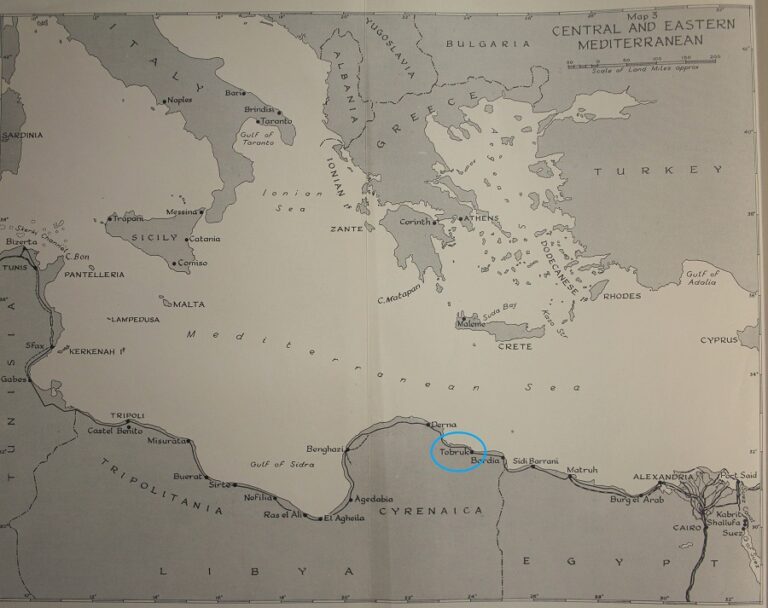
This printed map below shows the Italian defences at Tobruk at the time of its capture by the Allies in January 1941.
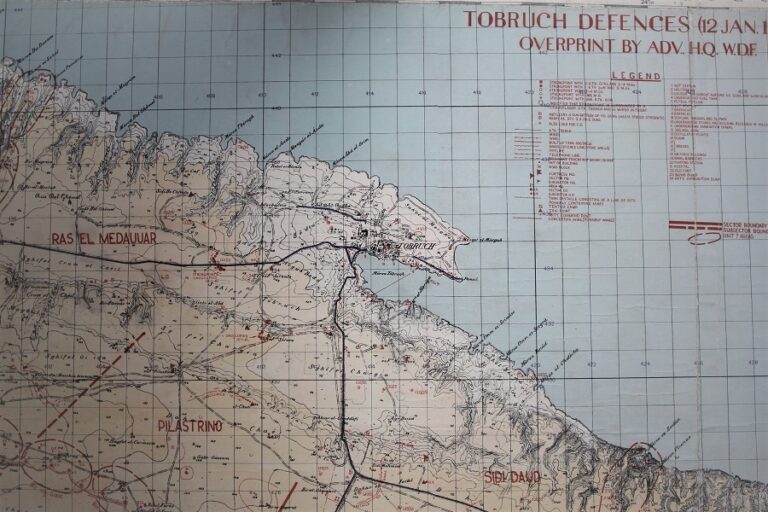
Further photographs and maps of Tobruk, and other ports in Libya, can be found in AIR 23/7049.
The capture and occupation of Tobruk (January to April 1941)
Tobruk was captured by Allied troops on 21/22 January 1941, during Operation Compass, an offensive against the Italian forces in Egypt and Cyrenaica. About 25,000 Italian personnel surrendered there, though the base itself was well-stocked with supplies. The sketch map below is from WO 201/2691, and shows the Allied advance on Tobruk and the opposing Italian forces. WO 106/2133 is a report on Operation Compass which discusses the attack on Tobruk.
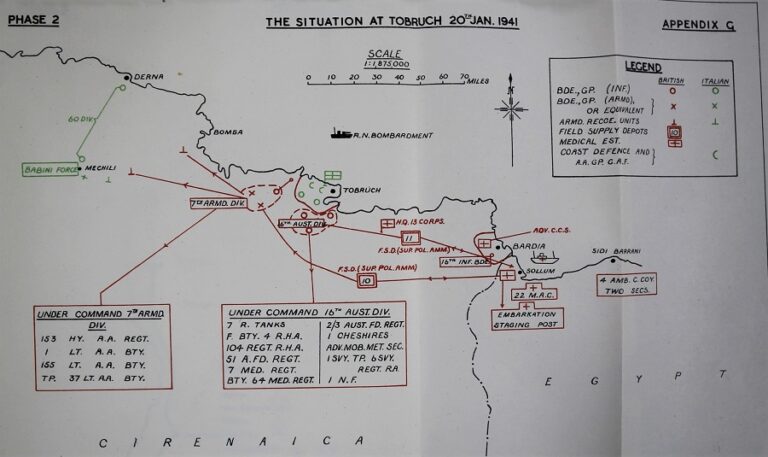

The photograph below is an oblique view of the harbour from around the time it was captured.
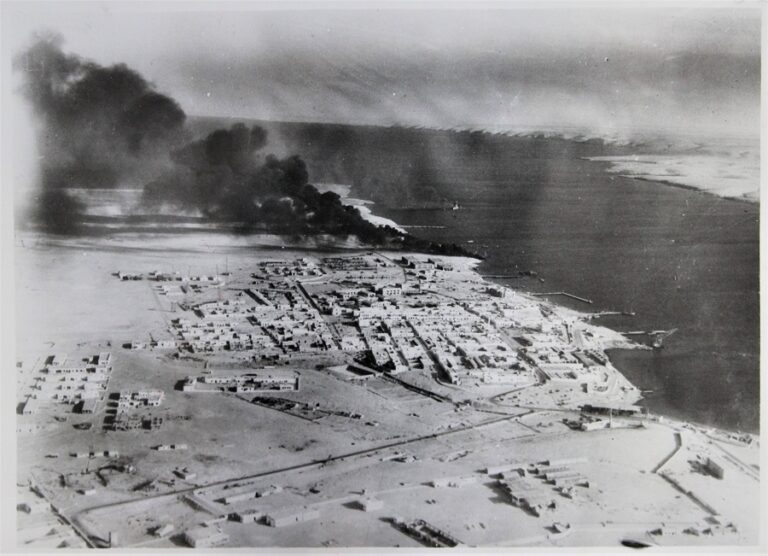
Tobruk besieged (April to November 1941)
The Allied victory in Cyrenaica prompted Germany to intervene in North Africa to support the Italians, and German troops under the command of General Rommel began arriving in Libya from February 1941. In April they suddenly advanced across Cyrenaica, quickly reaching the outskirts of Tobruk and the Egyptian frontier. While some of the Allied troops fell back into Egypt, others, including the 9 Australian Division, remained in Tobruk to hold the base. In April and May, the Germans and Italians made attempts to break into the fortress but were beaten back.
At the same time, General Wavell, the British commander in the Middle East, saw the importance of holding Tobruk to prevent an Axis advance into Egypt. He appointed the commander of the 9 Australian Division, General Morshead, to take charge there. Tobruk was cut off by land but the garrison could be supplied by sea. WO 201/353 is a report from the 9 Australian Division covering the defence of the base, with a discussion of how anxiety neurosis affected the troops.
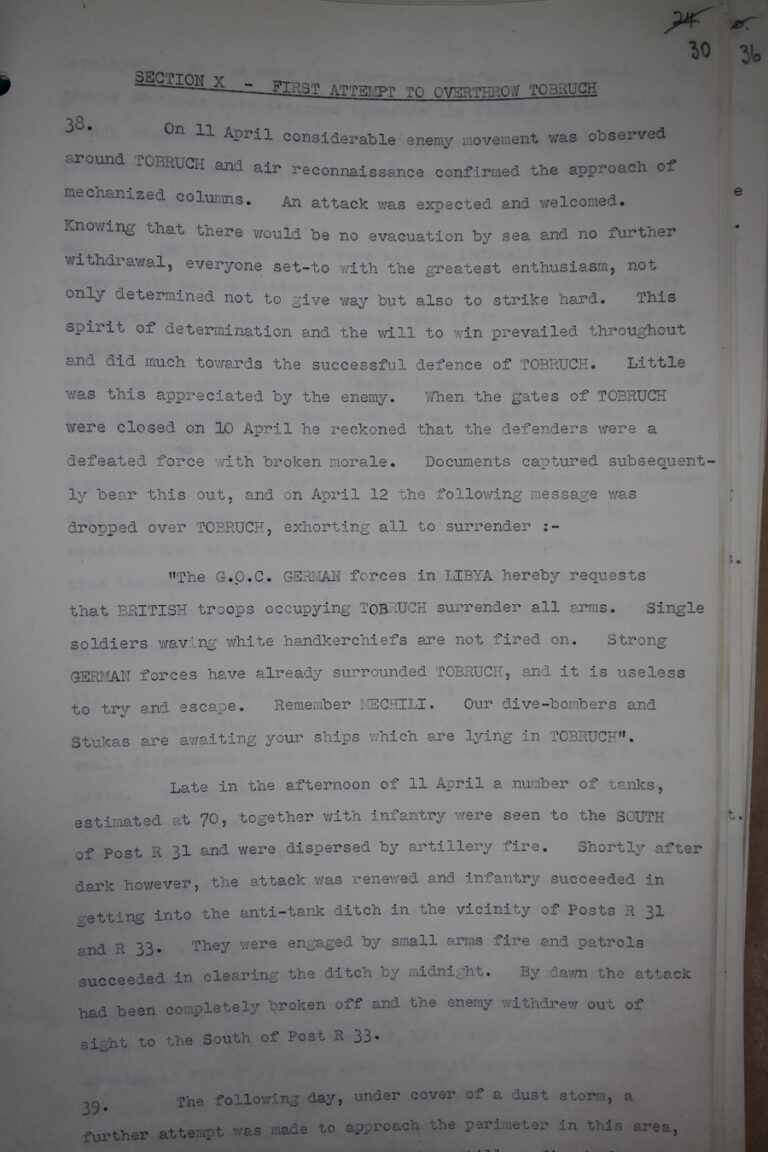
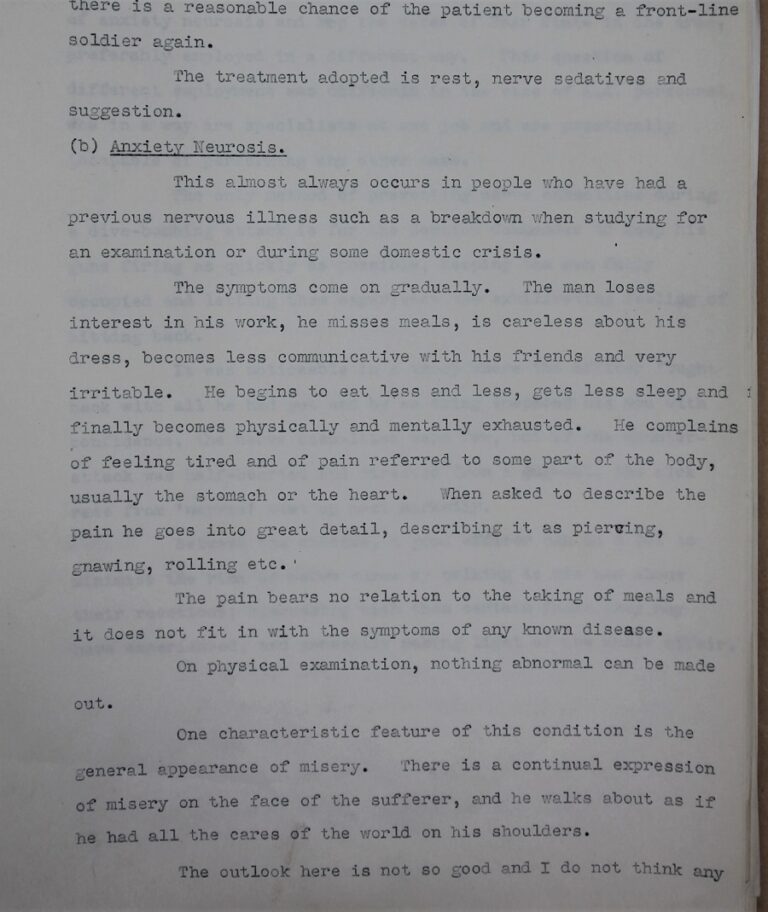
In June the Allied forces in Egypt launched Operation Battleaxe, an offensive intended to lift the siege, but this was thwarted by German troops covering the Egyptian frontier. Some sources for this operation are listed in our catalogue here.
In the meantime, the Royal Navy supported the garrison by bringing in supplies and reinforcements, though at the risk of air attack. Local support was provided by the Inshore Squadron, and one of its gunboats, HMS Ladybird, was sunk on 12 May. Casualty lists for this vessel can be found in ADM 358/3873. WO 201/2559 includes lists of supplies delivered in this period.
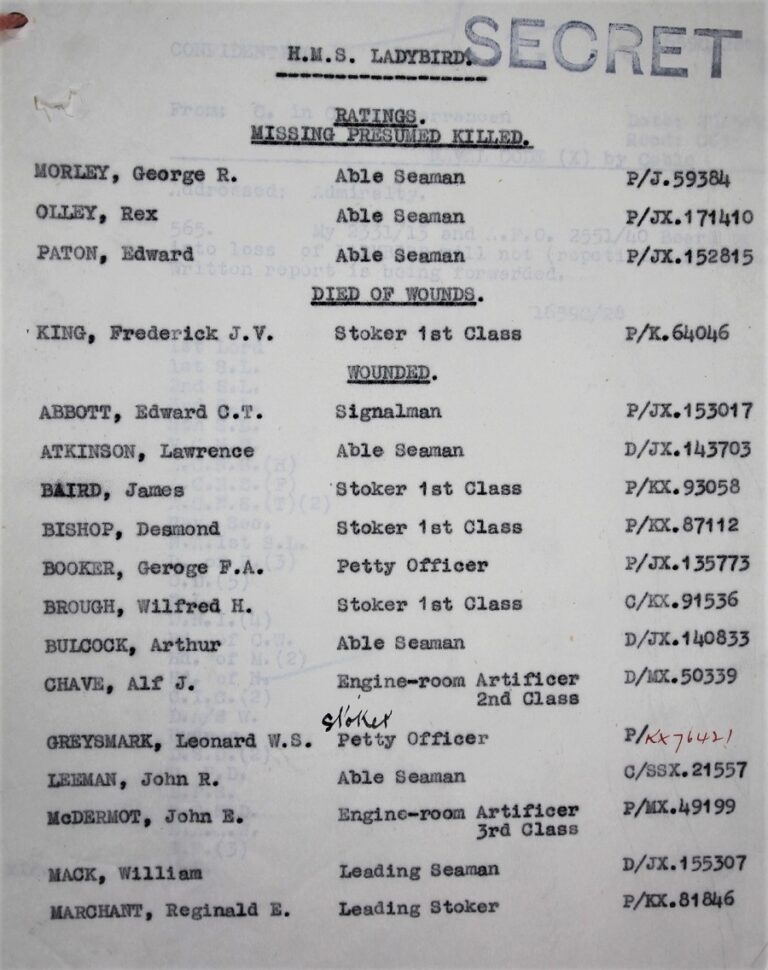
During the autumn most of the Australians were replaced, mainly by British and Polish troops. The relief of the Australians is covered in a variety of sources and some examples are listed here.
The Admiralty later produced a history of the Tobruk Run, as the naval operations were known, in a printed volume at ADM 234/334. The siege was also featured in an article in the War Illustrated magazine.
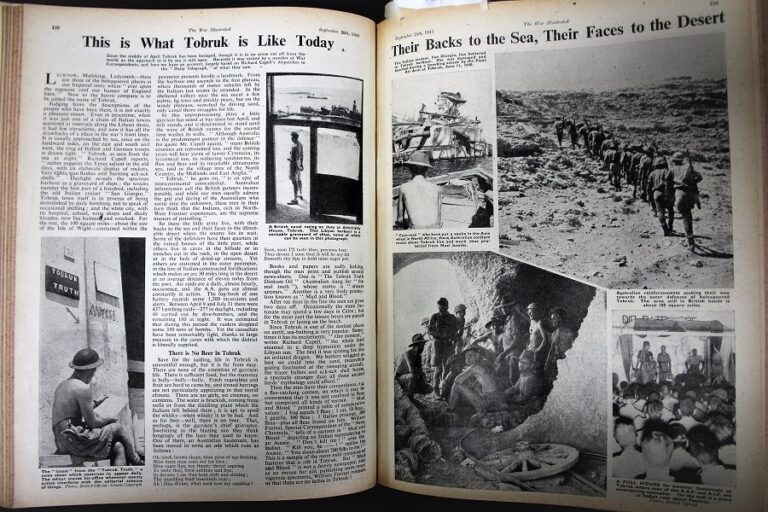
Break-out and relief (November 1941 to January 1942)
The siege continued until November 1941, when the Allies launched Operation Crusader, a much larger offensive with the aim of lifting the siege and regaining Cyrenaica. To carry out the attack, General Cunningham was placed in command of the newly-formed Eighth Army in Egypt. His forces included four Allied divisions in Egypt, another in Tobruk, and various other brigades. The beginning of this operation is depicted in the sketch map below.
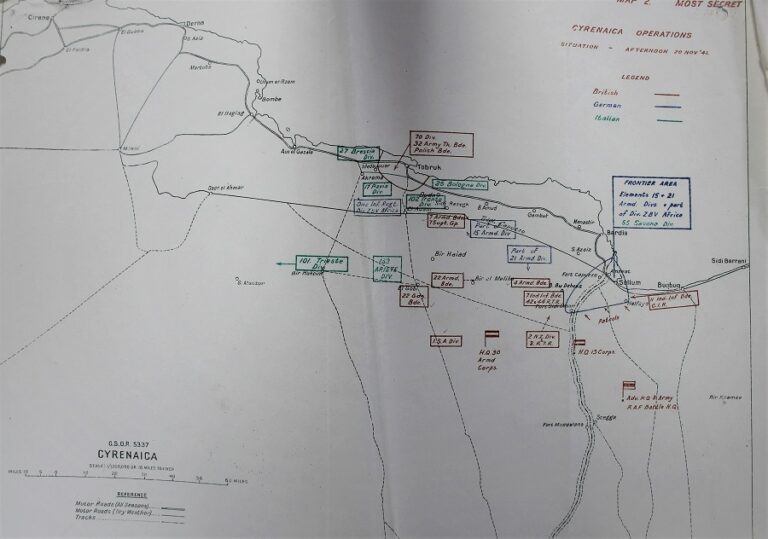
The Tobruk garrison, now under the command of the British 70 Infantry Division, had its own part to play. These troops began their break-out through the Axis siege lines on 21 November, and then linked up with Allied troops approaching from the east. The 70 Infantry Division headquarters diary is at WO 169/1215. Below is a diary page from XIII Corps recording the initial contact with Tobruk (in the blue highlight).

In the meantime the RAF was on hand to help during the operation, flying mainly from bases in Egypt. A summary of the air activity can be found in AIR 23/1181. The National Archives also holds a variety of air casualty reports in record series AIR 81 and a selection of them for this period is listed in our catalogue here (this catalogue search includes Gambut and El Adem, which were airfield locations outside Tobruk).

German counter-attacks during the break-out briefly isolated Tobruk again, but the Axis forces were worn down by constant fighting and lack of resources. During December they were forced to retreat from Cyrenaica and Tobruk was secure again, for the time being.
Following this battle a Victoria Cross was awarded to John Charles ‘Jock’ Campbell, an Acting Brigadier commanding the 7 Support Group within 7 Armoured Division. He had shown outstanding leadership in the confused fighting on the outskirts of Tobruk, rallying any British troops nearby while facing great danger himself. The file for this award can be downloaded from our website in WO 98/8/743. The war diary for 7 Support Group is also available, at WO 169/1185.
Part two of this blog will focus on the events of 1942, and the loss of Tobruk in particular.
